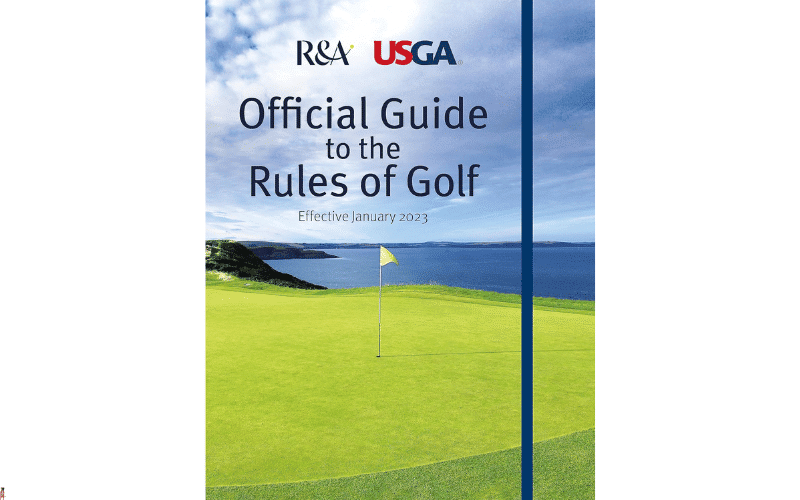Key Takeaways
- Always check the local rules sheet at the clubhouse or first tee before starting your round.
- Local rules can impact your game strategy, such as allowing preferred lies during wet conditions.
- Common local rules include relief from ground under repair and embedded ball relief.
- Being aware of course conditions and local rules ensures a fair and enjoyable game.
- Communicate with golf shop staff for any updates on course-specific regulations.
Introduction to Local Golf Course Rules
Golf, at its core, is a game of precision and strategy. While the universal rules of golf provide a framework for the game, local golf course rules add another layer of complexity that every golfer must navigate.
These rules are designed to address unique conditions and features specific to each course, ensuring fairness and enjoyment for all players.
Understanding these local rules is not just about compliance; it’s about enhancing your game and adapting to the challenges each course presents. Most importantly, knowing these rules can significantly influence your strategy and decision-making on the course.
Why Local Rules Matter
Local rules are crucial because they account for the unique characteristics and conditions of a specific golf course. For instance, a course might have areas that are frequently waterlogged, requiring special rules to address these conditions.
By understanding and following these local rules, you ensure that your game is fair and enjoyable.
Impact on Game Strategy
Local rules can dramatically alter your game strategy. Imagine you're playing on a course where the fairways are particularly narrow and lined with staked trees.
A local rule might offer relief if your ball lands near these trees, allowing you to reposition your ball without penalty. This knowledge allows you to play more aggressively, knowing that you have options if your ball lands in a tricky spot.
Moreover, some courses implement preferred lies, especially during wet conditions. This rule permits players to lift, clean, and place their ball within a specified distance.
It’s a game-changer when playing in less-than-ideal weather, as it helps maintain the integrity of the game while accounting for unavoidable course conditions.
Adapting to Course Regulations
Adapting to local course regulations is a skill that can be honed over time. It involves a combination of preparation, observation, and quick decision-making. Before you even step onto the first tee, familiarize yourself with the local rules.
This preparation involves checking the rules sheet, consulting with the golf shop staff, and reviewing any updates on the course’s website or social media. For more insights, consider these overlooked rules of golf every player should know.
Once on the course, observe how these rules apply to your game. For example, if a rule allows relief from ground under repair, assess your situation carefully and decide the best course of action.
By adapting to these regulations, you’ll not only play by the rules but also improve your overall performance.
Common Local Course Rules
Local golf course rules can vary widely, but some are more common than others. Familiarizing yourself with these rules can help you navigate any course with confidence.
Preferred Lies or Winter Rules
Preferred lies, often referred to as "winter rules," allow players to improve their lie on closely mown areas of the course. This rule is typically in effect during adverse weather conditions, such as heavy rain, when the course is particularly wet.
By enabling players to lift, clean, and place their ball within a certain distance, preferred lies help maintain the integrity of the game and protect the course from further damage.
Ground Under Repair
Ground under repair is another common local rule that provides relief when your ball lands in an area marked as under repair. These areas are usually identified by white lines or stakes and are often in the process of being maintained or restored.
When your ball lands in such an area, you are allowed to drop it within one club-length of the nearest point of relief, no closer to the hole, without penalty. For more on golf rules, you might find our guide on understanding out of bounds rules in golf helpful.
Example: You’re playing at a course where a portion of the fairway is being reseeded. This area is marked as ground under repair. If your ball lands here, you can take relief by dropping your ball outside the marked area without incurring a penalty stroke.
Preparation Before Your Round
Before you even step onto the green, preparation is key to ensuring a successful and enjoyable round of golf. Understanding the local rules and conditions specific to the course you’re playing is an integral part of this preparation.
By doing so, you not only enhance your strategy but also show respect for the course and its rules. For example, knowing the out-of-bounds rules can prevent unnecessary penalties and improve your game.
One of the first steps in preparing for your round is to gather as much information as possible about the course. This involves checking the local rules sheet, speaking with the golf shop staff, and reviewing any updates available online.
For instance, understanding golf etiquette rules can enhance your experience on the course. Let’s dive into each of these steps in more detail.
Example: A seasoned golfer always arrives at the course an hour early. He spends the first 15 minutes reviewing the local rules and conditions, ensuring he’s aware of any changes that might affect his play.
By dedicating time to preparation, you set yourself up for a smoother round and can adjust your strategy according to the specific challenges of the course.
Checking Local Rules Sheet
The local rules sheet is your go-to source for understanding any course-specific regulations in effect. This sheet is typically posted in the clubhouse or at the first tee.
It provides essential information about temporary rules, such as preferred lies or specific areas marked as ground under repair.
Get Information from Golf Shop Staff
Don’t underestimate the value of a conversation with the golf shop staff. They are often well-informed about the latest course conditions and any changes to local rules. By asking them for insights, you can gain valuable tips that aren’t listed on the rules sheet.
Besides that, staff members can offer advice on how to tackle specific challenges on the course. For example, they might suggest which clubs to use in particular areas or how to navigate a newly added water hazard. Their expertise can provide you with a competitive edge.
Remember, the staff is there to help you. Don’t hesitate to ask questions or seek clarification on any rules you’re unsure about. It’s better to be informed than to face penalties for unintentional rule violations.
Review Updates from Course Website or Social Media
In today’s digital age, many golf courses provide updates on their websites or social media platforms. These updates can include information on course conditions, upcoming events, and any changes to local rules.
Checking these resources before your round ensures you have the latest information at your fingertips.
Navigating Local Conditions
Example: A golfer checks the course's Facebook page the night before a tournament. She learns that heavy rain has affected the back nine, prompting the implementation of preferred lies for the weekend.
Navigating local conditions is a crucial aspect of playing any golf course. Weather, terrain, and other environmental factors can all influence the way you play. By understanding and adapting to these conditions, you improve your chances of a successful round.
Local conditions can vary significantly from one course to another. Therefore, it’s essential to assess these conditions before and during your round. Doing so allows you to adjust your strategy and make informed decisions on the course.
Weather Impact and Course Modifications
Weather plays a significant role in how a golf course is played. Rain, wind, and temperature can all impact the course’s condition and, consequently, your game. For instance, heavy rain might result in waterlogged fairways, prompting the implementation of preferred lies.
Identifying Unplayable Areas
Unplayable areas are parts of the course where playing the ball as it lies is not feasible. These areas might include dense rough, steep slopes, or waterlogged sections.
Identifying these areas early on allows you to plan your shots more effectively and avoid unnecessary penalties. For more insights on how to navigate these challenges, check out these overlooked rules of golf.
Most importantly, if you find yourself in an unplayable area, familiarize yourself with the relief options available. These options often include taking a drop at the nearest point of relief or replaying the shot from the original position.
Knowing your options helps you make the best decision for your game. For more on understanding specific rules, check out this guide on out-of-bounds rules in golf.
Adapting Strategy to Local Conditions
Adapting your strategy to local conditions is an essential skill for any golfer. This involves assessing the course’s layout, understanding the impact of weather, and considering any temporary rules in effect. By doing so, you can adjust your approach and play to your strengths.


Etiquette and Best Practices on the Course
Golf is not only about skill but also about etiquette. Respecting the course, fellow players, and the game itself is paramount. Adhering to best practices ensures a positive experience for everyone involved.
Respect for Environment and Wildlife
Golf courses are often home to diverse wildlife and beautiful landscapes. As a golfer, it’s your responsibility to respect and preserve these natural environments.
This means avoiding damage to the course, not disturbing wildlife, and leaving no trace of your presence. For more on how to enhance your golfing experience, check out these common penalty stroke mistakes to avoid.
Proper Cart Usage and Care for the Course
Using a golf cart is convenient, but it comes with responsibilities. Proper cart usage is essential for maintaining the course and ensuring a smooth round for everyone.
Always stick to designated cart paths and avoid driving on wet or muddy areas to prevent damage. When parking, ensure your cart is well away from greens and tees.
Besides that, pay attention to any specific cart rules the course may have. Some courses restrict carts to paths only, especially after heavy rain.
Others may have specific areas marked as no-cart zones. Adhering to these rules not only protects the course but also enhances the overall golfing experience.
Communication and Safety: When to Yell “Fore!”
Safety on the golf course is paramount, and communication plays a crucial role in maintaining it. If you hit a shot that may endanger another player, immediately yell "Fore!" to alert them. This simple act can prevent accidents and ensure everyone remains safe.
Moreover, always be aware of your surroundings. Look ahead before taking a shot, and never swing if someone is within your line of play.
Being considerate and communicative keeps the course a safe and enjoyable environment for all players. To further improve your game, make sure to avoid common penalty stroke mistakes.
Final Thoughts on Local Rules
Local golf course rules are an integral part of the game, offering a tailored approach to the unique challenges each course presents. By understanding and adhering to these rules, you ensure a fair and enjoyable round, respecting both the course and your fellow players.
For more insights, explore our guide on understanding out-of-bounds rules in golf.
Ultimately, local rules are about maintaining the integrity of the game while adapting to specific conditions. They enhance the golfing experience, making it more enjoyable and strategic.
Therefore, always take the time to familiarize yourself with these rules before teeing off. For more insights, check out these overlooked rules of golf every player should know.
Why Staying Updated Matters
Golf courses can change, and so can their local rules. Staying updated with the latest information is crucial for ensuring you’re playing by the correct rules.
This means regularly checking the course's website, speaking with staff, and reviewing any posted updates. For instance, understanding changes in out-of-bounds rules can significantly impact your game strategy.
By keeping informed, you not only play by the rules but also gain insights that can improve your strategy and performance. Knowledge is power, and in golf, it can be the difference between a good round and a great one.
Encouragement for Continued Learning
Golf is a lifelong journey of learning and improvement. Whether it's understanding local rules or refining your swing, there’s always room for growth. Embrace the learning process, seek advice from experienced players, and continue to expand your knowledge of the game.
By doing so, you’ll not only enhance your skills but also deepen your appreciation for the sport. Remember, the more you know, the better you’ll play.
Frequently Asked Questions
Understanding local golf course rules can sometimes be confusing. Here are some common questions to help clarify these rules:
What Are Preferred Lies?
Preferred lies, also known as "winter rules," allow golfers to improve their ball's position on the fairway due to adverse conditions. This rule lets you lift, clean, and place your ball within a specified distance, ensuring fair play during wet or muddy conditions.
What Does “Ground Under Repair” Mean?
"Ground under repair" refers to areas on the course marked for maintenance or restoration. If your ball lands in such an area, you can take a free drop within one club-length of the nearest point of relief, no closer to the hole.
How Do Weather Conditions Affect Local Rules?
Weather conditions can significantly impact local rules. For example, heavy rain might lead to the implementation of preferred lies to protect the course.
Always check the local rules sheet or speak with staff to understand how weather may have altered the rules for your round. For more insights, read about common penalty stroke mistakes that can occur due to unexpected weather conditions.
What Should I Do If I Find a Staked Tree Interfering with My Play?
If a staked tree interferes with your stance or swing, local rules often allow for relief. This means you can drop your ball within one club-length of the nearest point of relief, no closer to the hole, without penalty.
Example: During a tournament, a player finds their ball resting against a staked tree. Following local rules, they take relief and drop the ball in a better position, avoiding any penalty strokes.
Understanding these scenarios helps you navigate the course effectively and ensures you play by the rules. To avoid unnecessary penalties, you can read more about common penalty stroke mistakes.

